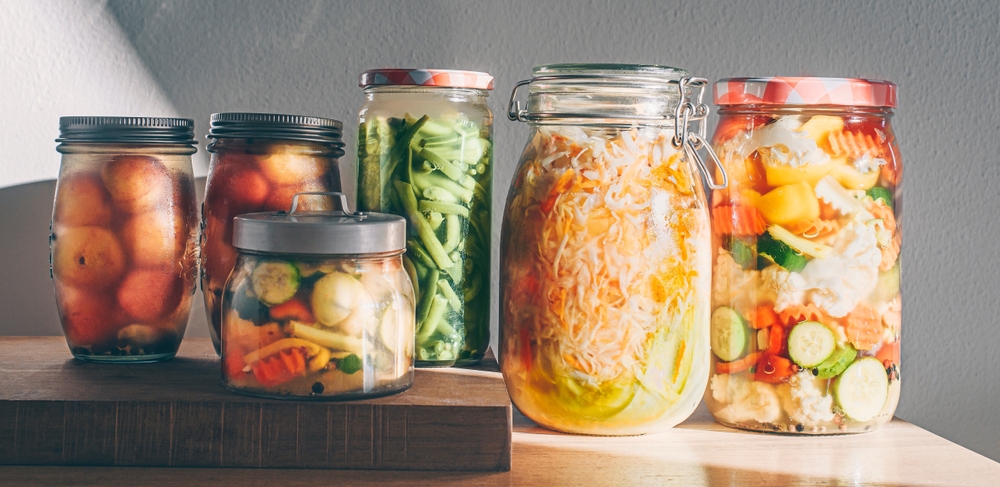Inventory Practices That Cut Kitchen Waste and Costs
Reducing waste and controlling costs in a kitchen begins with disciplined inventory practices that align purchasing, menuplanning, and on‑station technique. Practical changes — from tracking seasonality to choosing preservation and fermentation methods — can lower spoilage, streamline labor, and retain flavor and sensory quality in dishes and beverages without compromising sustainability.

Reducing waste and controlling costs in a kitchen begin with disciplined inventory practices that align purchasing, menuplanning, and on‑station technique. Practical changes — from tracking seasonality to choosing preservation and fermentation methods — can lower spoilage, streamline labor, and retain flavor and sensory quality in dishes and beverages without compromising sustainability. Clear records, portion control, and flexible menus build resiliency so that restaurants and food operators manage inventory as a resource rather than a liability.
How does seasonality shape inventory decisions?
Seasonality affects availability, price, and flavor intensity. Planning inventory around seasonal produce reduces storage time and waste because items arrive at peak freshness and require less preservation. Seasonal buying also supports sustainability by shortening transport chains and enabling predictable menu rotations. When procurement teams factor harvesting windows into order schedules, they minimize overstocking and avoid last‑minute substitutions that can create both flavor inconsistency and additional waste.
How can menuplanning reduce food waste?
Menuplanning that links recipes to current inventory enables purposeful use of perishable items across the day and week. Designing dishes to allow pairing of similar ingredients — for example, using roasted peppers in both entrees and sauces — reduces the number of distinct SKUs on hand. Cross‑utilization reduces spoilage risk and enhances texture and sensory coherence across a menu. Regularly reviewing par levels and forecasting service patterns keeps purchases aligned with demand and labor capability.
What preservation and fermentation techniques help?
Preservation strategies — proper cold storage, blanching, vacuum sealing, and controlled‑atmosphere storage — extend usable life while preserving flavor and texture. Fermentation is an accessible technique that turns surplus produce into shelf‑stable condiments and beverages with complex sensory profiles. Both approaches add menu variety: fermented items contribute acidity and depth, while preserved ingredients allow predictable plating during slower seasons. Training staff on safe preservation and documenting hold times are essential for food safety and waste control.
How to use pairing, flavor, and sensory cues?
Thinking in terms of pairing and flavor relationships helps stretch ingredients. When chefs pair a dominant protein or vegetable with adaptable accompaniments, small amounts of high‑impact ingredients can carry multiple dishes. Sensory cues like texture and temperature also guide reuse: crisp elements can be refreshed with a quick saute or rehydrate, and fond from roasting can be turned into sauces. These practices preserve the diner’s experience while reducing the need for one‑off components that increase waste.
How plantbased and beverage choices affect costs?
Incorporating plantbased options can lower ingredient costs if sourced seasonally and used across the menu, but careful inventory management is still required to avoid spoilage of delicate produce. Beverage inventory — from cocktail mixers to nonalcoholic options — benefits from batching and preservation (acidified syrups, citric stabilization) to lengthen shelf life. Tracking unit yield and waste for both food and beverages reveals where portion adjustments or pairing changes can cut costs without reducing sensory quality.
Real-world pricing and tool comparisons
Practical cost control often requires basic tools: inventory software, scales, and barcode systems. Monthly software subscriptions and initial hardware purchases are common expenses; labor to run cycle counts and maintain records is another ongoing cost. Typical benchmarks for small to mid‑size operations might include software subscriptions in the low tens to a few hundred dollars per month, plus one‑time hardware costs for scanners and scales. Below is a comparison of several inventory solutions and estimated starting costs.
| Product/Service | Provider | Cost Estimation |
|---|---|---|
| Inventory management software (restaurant focus) | MarketMan | Around $99+/month (varies by features/location) |
| Procurement and inventory platform | BlueCart | Starting estimates commonly quoted in the $50–$150/month range (varies by contract) |
| POS with inventory features | Toast (Inventory module) | Software subscription often starts near $69/month; inventory add‑ons may increase cost |
| POS and restaurant management | Square for Restaurants (Plus) | Square Plus plan approximately $59/month per location (inventory features in paid tiers) |
Prices, rates, or cost estimates mentioned in this article are based on the latest available information but may change over time. Independent research is advised before making financial decisions.
Conclusion Inventory practices that reduce waste and costs combine planning, technique, and modest technology investments. Emphasizing seasonality, purposeful menuplanning, preservation and fermentation, and thoughtful pairing preserves flavor, sensory quality, and texture while improving sustainability and margins. Regularly reviewing inventory data and aligning purchasing with predictable demand turns inventory from a recurring expense into a managed operational asset.





